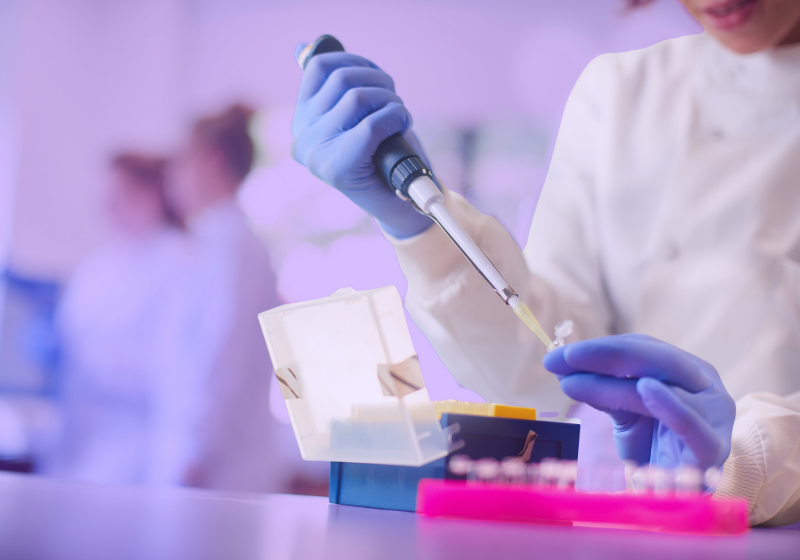Routine tasks in laboratories, such as scheduling instruments, moving samples, monitoring equipment, and consolidating data, are essential for operations but can be repetitive and time-consuming. Although these activities require careful attention, they often prevent scientists from focusing on work that fully leverages their expertise.
Lab automation is often misunderstood as a replacement for people, but it actually replaces inefficiency. By automating activities that consume valuable hours and introduce human error, laboratory teams can focus on higher-value work such as experiment design, data analysis, and scientific discovery.
This article examines common processes that can be automated, highlights the benefits for staff, and demonstrates how platforms like Director™ can help laboratories operate more efficiently.
Key Automated Lab Tasks
- Equipment Scheduling and Coordination
Manually planning instrument availability and experiment sequencing can lead to delays. Centralized scheduling keeps workflows organized and ensures experiments run on time. - Sample Management
Sorting, moving, and labelling samples increases the risk of errors. Tracking systems maintain sample accuracy and allow them to be easily traceable throughout the workflow. - Plate Transfers Between Instruments
Manually moving plates between devices introduces variability. Robotic handling ensures consistent transfers and improves reproducibility. - Reagent Dispensing
Repeated pipetting can lead to inconsistencies. Liquid handling systems deliver precise volumes consistently, ensuring reliable results. - Environment and Equipment Monitoring
Monitoring temperatures, CO₂, humidity, and other device conditions requires careful attention. Automation enables continuous tracking and automatically flags deviations, maintaining optimal conditions without staff supervision. - Data Capture and Logging
Collecting and consolidating data from multiple instruments can be time-consuming and prone to mistakes. Integrated systems standardize results for faster analysis. - Routine Quality Checks
Checking reagent levels, instrument status, and protocol completion consumes valuable time. Automatic monitoring tools perform these checks continuously and alert staff only when action is required. - Workflow Sequencing
Coordinating multi-step experiments manually increases the risk of errors. Scheduling software organizes each step, minimizes idle time, and ensures protocols are executed accurately.
Benefits for Laboratory Teams
- Enhanced Workflow Efficiency
Repetitive administrative tasks can delay operations and create bottlenecks. Lab automation streamlines these processes, allowing teams to complete work more efficiently. - Improved Reproducibility
Manual processes introduce variation between experiments, affecting reliability. Automated systems perform protocols consistently, ensuring results can be reproduced accurately. - Accelerated Data Interpretation
Manually consolidating and cleaning data delays analysis and decision-making. Automation provides structured, organized data in real time, enabling quicker interpretation and insight. - Optimized Resource Use
Errors in sample handling, pipetting, or scheduling can waste reagents, consumables, and instrument use. Automation minimizes these mistakes, helping staff make better use of materials and equipment. - Reduced Cognitive Load
Managing multiple tasks manually is mentally demanding. Automation handles routine processes, reducing stress and enabling staff to focus on higher-value duties.
Optimizing Laboratory Performance with Director™ Software
Director™ lab scheduler streamlines workflows by consolidating scheduling, monitoring, and data management into a single platform. Web-based workflow management optimizes instrument use, while real-time simulation and editing allow adjustments without disrupting experiments. Integrated alerts track instrument status, supplies, and environmental conditions to prevent issues. The software also provides 21 CFR Part 11–compliant data logging to ensure full traceability and accuracy.
Conclusion
Automation transforms laboratory operations by improving precision, reliability, and consistency. It streamlines workflows, reduces errors, and ensures high-quality results, enabling teams to maintain performance even under increasing demands. The benefits are measurable through faster processes, improved data accuracy, and more efficient resource usage. Laboratories that implement an automated system gain a structured, resilient workflow that drives productivity and enhances data quality.
Contact us today to book a demo to discover how your team can work smarter, save time, and achieve consistent, dependable results.

